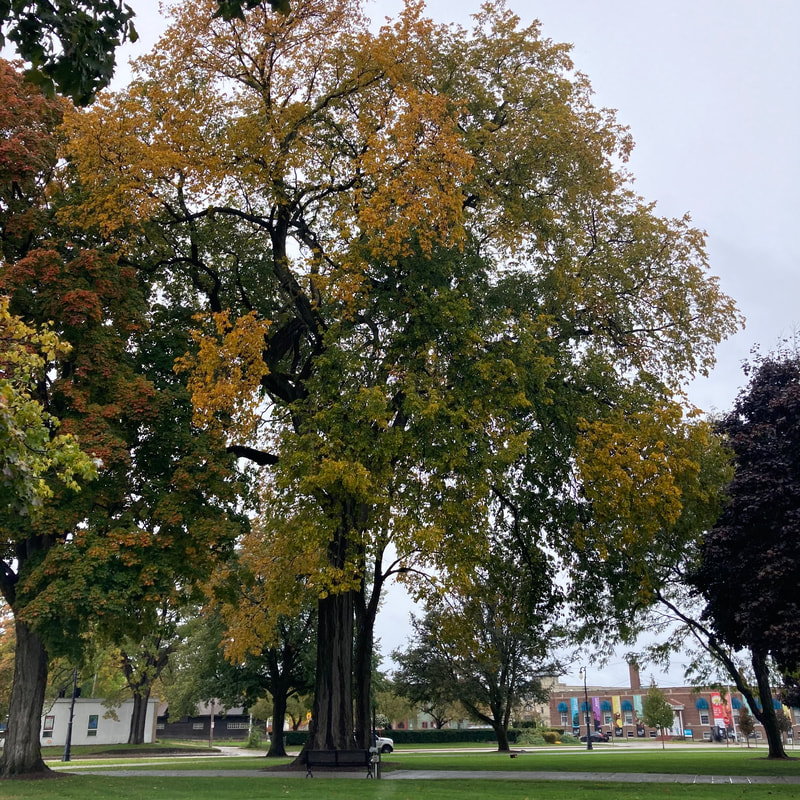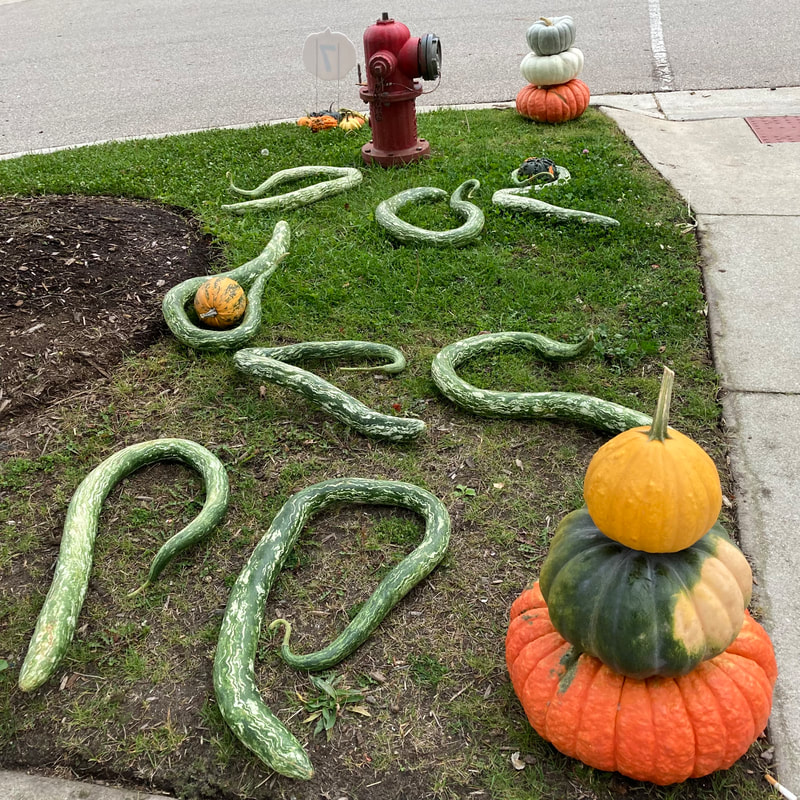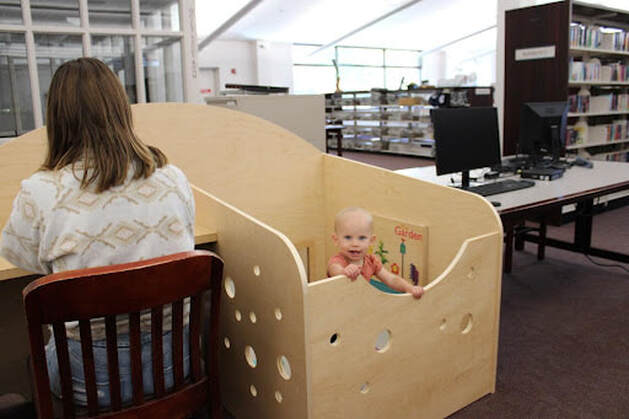|
Fremont Library to Host Japanese Balloon Bombs Presentation & Native American Heritage Presentation
Live @ the Library, a series of events including author visits and informational presentations is hosting two events at the beginning of November. The first will be about Japanese balloon bombs during World War II, and the second will be about life on historical Turtle Island before European contact. Floating Vengeance: The World War II Japanese Attack on Michigan presented by Michael Unsworth: Japan sent over 9,300 balloons to attack the North American mainland from November 1944 to early April 1945. This campaign was Japan’s attempt at vengeance for the April 1942 Doolittle attack on the island of Honshu. Built of laminated panels of paper, filled with hydrogen gas, and kept aloft by an ingenious altitude control mechanism, the balloons traveled the jet stream to make the 6,200-mile crossing of the Pacific. The furthest east they were discovered was in Michigan. This talk will discuss general outlines of the balloon attacks followed by a detailed description of the two balloons which were discovered at the border area of Kent & Allegan counties and in Farmington in the Detroit suburbs. Presenter Michael Unsworth is the co-author of the annotated bibliography Future War Novels (1984) and the editor of Military Periodicals (1991). He has also written a number of articles, concentrating on military history. He has written several articles and given numerous lectures on the Japanese balloon attack. Most recently he appeared in the Great Balloon Bomb Invasion which is on the Discovery+ streaming service. This free program will begin in the library’s Community Room on Tuesday, November 1st at 7:00 p.m. Under the Western Sun: An Indigenous Account of Life on Historical Turtle Island presented by Carmen Alfaro: Have you ever wondered what life was like on Turtle Island (North America) before European contact? Did you imagine towering cities with sanitation canals, trade networks that spanned thousands of miles, and artisan-crafted books? Join Carmen Marie, Wixárika, of The Sunhart Center of Ecology & Design for an interactive conversation on what life was really like just over 500 years ago and the rich heritage it brings to contemporary Indigenous Peoples. Recording devices requested to be turned off during drumming and songs. Carmen Marie is the Two-Spirit, Wixárika owner of The Sunhart Center of Ecology & Design, a social-mission driven center "dedicated to stewarding our Lands for the next 7 Generations." She draws her knowledge from many sources including Elders' teachings, a background in cultural anthropology, and her mentors. She specializes in Traditional Ecological Knowledge, native food and medicine plants, and Wixárika culture. This free program will begin in the library’s Community Room on Thursday, November 3rd at 7:00 p.m. Learn more about library events by visiting www.fremontlibrary.net or call 231-924-3480.
0 Comments
Photo and article by Donna Iverson Survivor elm. That’s what a lone elm tree is called when it is the sole tree of its species still standing, maybe within a mile radius. Scientists believe these survivor elms have some kind of genetic resistance to Dutch elm disease. They are identifying and studying these elms in the hope of restoring the elm tree in greater numbers in the landscape. The Michigan Department of Natural Resources (DNR) is leading the effort in our state. In cooperation with the US Forest service, the DNR is asking for information from anyone finding an elm tree in their neighborhood. The elm tree’s location can be reported at https://mucc.org/bringing-back-the-american-elm/ The DNR is collecting branches from elm trees. These samples are being used to create a seed orchard of genetically diverse and resilient American elm trees that will not succumb to Dutch elm disease, according to the United Michigan Conservation Club website. Several elm varieties are showing promise. They include varieties called Valley Forge, Lewis and Clark, Jefferson and New Harmony. The American elm tree dates back to the Miocene geological era, approximately 20 million years ago. It was introduced to the Americas from Europe in the 1800’s and was popular with furniture makers. Soon it became the most popular shade tree in the eastern US and Midwest. It grew to 100 feet with a huge canopy that provided both beauty and shade for its owners. It can live to be 200 years old. Disaster struck in the early twentieth century. In 1921, two Dutch pathologists discovered the first signs of Dutch elm disease. The disease was not Dutch in origin but acquired its name from the nationality of the two Dutch women who identified it: Bea Schwartz and Christine Johanna Buisman. Dutch elm disease is a fungus spread by bark beetles. It spreads through the tree's vascular system, killing it in one to four years. The fungus can affect other trees also but that is rare. In the last 100 years, the disease has killed off 40 million American elm trees. Today, the nearly-extinct tree is slowly making a recovery. Fremont Library to Host Homeschool Basics Program & Dementia Behaviors Program
Live @ the Library, a series of events including author visits and informational presentations is hosting two events at the end of October. The first will be about Homeschool Basics, and the second will be about Understanding Dementia Behaviors. Homeschool Basics: Interested in homeschooling but don't know where to start? Or maybe you've been homeschooling for awhile, but you're looking for some fresh inspiration and tips. Join seasoned homeschoolers Angela Brott and Samantha Kauffman as they present information about Michigan homeschool law, how to shop for curriculum, ideas for your homeschool space, tips and tricks, etc. This free program will begin in the library’s Community Room on Tuesday, October 25th at 7:00 p.m. Understanding Dementia Behaviors & Enjoying Family Celebrations: Behavior is a powerful form of communication and is one of the primary ways for people with dementia to communicate their needs and feelings as the ability to use language is lost. However, some behaviors can present real challenges for caregivers to manage. Join us to learn strategies to help intervene with some of the most common behavioral challenges of Alzheimer's disease. Plus learn practical tips to reduce stress and agitation during holiday celebrations. Registrations preferred, but walk-ins are welcome. You can register by calling the Alzheimer's Association 24/7 Helpline at 800-272-3900. This free program will begin in the library’s Community Room on Thursday, October 27th at 7:00 p.m. Learn more about library events by visiting www.fremontlibrary.net or call 231-924-3480. Photo and article by Donna Iverson
The farmers market vendors were dressed like witches and goblins. Ghostly sheets hung from nearby trees. Even the squash were doing their part. Ominously appearing to slither along the ground were the snake gourds. Scientifically known as Trichosanthes cucumerina, snake gourds are native to tropical regions in Asia. They grow wild in India, China, Nepal, Indonesia and Australia. But with the warm summer this year, at least one Michigan farmer was able to grow them locally. Technically a fruit and not a vegetable, there are two kinds of snake gourds…the edible and the ornamental kind. Those pictured here are edible and immature. Cucumbers and the squashes are close relatives. The snake gourds need warm nights to produce fruit on vines that grow to six feet and need a trellis for best results. In their immature state, they taste like cucumbers and are eaten raw. Mature snake gourds develop a red pulp and are used as a substitute for tomatoes in African dishes. They can also be cooked like zucchini. Especially popular in India, the snake gourd is used both in cooking and in medicine. Medicinally, the snake gourd is a staple of Ayurvedic medicine. It is used to treat stomach, liver and skin maladies. Ayurvedic practitioners claim it detoxifies the kidneys, prevents constipation, loosens phlegm and soothes depression, anxiety and acid reflux. Its seeds are recommended for hypertension, diarrhea and fever. If the ornamental variety is allowed to harden, it can be fashioned into an Australian didgeridoo. And of course, they make great Halloween decorations that will scare any goblins passing by. Fremont Library Serves Parents & Caregivers with New Family Workstations
From our friends at FADL: Staff at the Fremont Area District Library are thrilled to announce that the library now has two family workstation carrels for parents and caregivers. One is in the Children's Department and one is in the adult area. Library Director Jackilyn Roseberry says, “Here at the library, we feel extraordinarily fortunate to have so much support from our community. Not just from our patrons who come in every day but also from organizations like the Gerber Foundation, who recently provided us with a grant that allowed us to purchase these carrels for the library. These will allow a parent/caregiver to work on the computer while keeping their little one(s) in a safe confined place next to them. We want to make sure everyone in the community feels welcome here and that we have a place for them. Whether you need to check your social media, email a friend, apply for a job, complete school work, or anything else that requires a computer, you will be able to do that with your young child by your side.” Each carrel will be equipped with a learning panel, age appropriate board books, and other age appropriate toys that will be cleaned regularly and replaced as needed. Computers will soon be installed at each workstation. The Fremont Area District Library would like to extend a huge thank you to the Gerber Foundation for helping them serve our community! |
Archives
July 2024
Categories |








 RSS Feed
RSS Feed